|
|
 |
BELLOTTO, Bernardo
|
|
Italian Rococo Era Painter, ca.1721-1780
Bernardo Bellotto (30 January 1720 ?C 17 October 1780) was an Italian urban landscape painter or vedutista, and printmaker in etching famous for his vedutes of European cities (Dresden, Vienna, Turin and Warsaw). He was the pupil and nephew of Canaletto and sometimes used the latter's illustrious name, signing himself as Bernardo Canaletto ?? fraudulently, according to some. Especially in Germany, paintings attributed to Canaletto may actually be by Bellotto rather than by his uncle; in Poland, they are by Bellotto, who is known there as "Canaletto".
Bellotto's style was characterized by elaborate representation of architectural and natural vistas, and by the specific quality of each place's lighting. It is plausible that Bellotto, and other Venetian masters of vedute, may have used the camera obscura in order to achieve superior precision of urban views. |
|
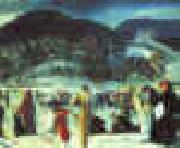 |
Bellows, George
|
|
American, 1882-1925.American painter and lithographer. He was the son of George Bellows, an architect and building contractor. He displayed a talent for drawing and for athletics at an early age. In 1901 he entered Ohio State University, where he contributed drawings to the school yearbook and played on both the basketball and baseball teams. In spring of his third year he withdrew from university to play semi-professional baseball until the end of summer 1904; |
|
|
|
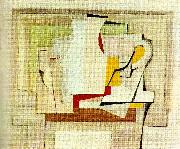 |
ben nicholson
|
|
Born in 1894 in Denham, Buckinghamshire, Nicholson was the son of the painter Sir William Nicholson and Mabel Pryde, and the brother of Nancy Nicholson. The family moved to London in 1896 and Nicholson was educated at Tyttenhangar Lodge Preparatory School, Seaford, Heddon Court, Hampstead and then as a boarder at Gresham's School, Holt, Norfolk. He trained as an artist at the Slade School of Fine Art from 1910?C1914, where he was a contemporary of Paul Nash, Stanley Spencer, Mark Gertler, and Edward Wadsworth.
Nicholson was married three times: firstly to Winifred Roberts (married 5 November 1920 at St. Martin-in-the-Fields Church, London; divorced 1938) with whom he had three children, a son Jake in June 1927, a daughter Kate in July 1929 (who later became an artist herself) and a son Andrew in September 1931. His second marriage was to fellow artist Barbara Hepworth (married 17 November 1938 at Hampstead Register Office; divorced 1951) with whom he had triplets, two daughters Sarah and Rachel and a son Simon in 1934 and third to Felicitas Vogler, a German photographer (married July 1957; divorced 1977). |
|
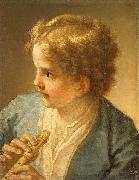 |
Benedetto Luti
|
|
Benedetto Luti (17 November 1666 - 17 June 1724) was an Italian painter.
Luti was born in Florence. He moved to Rome in 1691 where he was patronized by Cosimo III de' Medici, Grand Duke of Tuscany, an enthusiast for the pastel portrait. Luti was one of the first artists to work in pastels as the final composition as opposed to initial studies for paintings or frescoes. He also worked in oils and painted frescoes for the Basilica di San Giovanni in Laterano.
Luti was also a successful art dealer and ran a school of drawing; among his pupils were Giovanni Domenico Piastrini, Giovanni Paolo Panini, Claude Arnulphy, Jean-Baptiste van Loo, William Kent. |
|
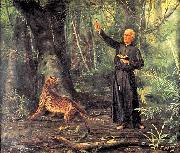 |
Benedito Calixto
|
|
(14 October 1853 -- 31 May 1927) was a Brazilian painter. His works usually depicted figures from Brazil and Brazilian culture, including a famous portrait of the bandeirante Domingos Jorge Velho in 1923, and scenes from the coastline of São Paulo. Unlike many artists of the time, Calixto's patron was an individual other than the state, who were "the most dependable source of patronage." |
|
|
|
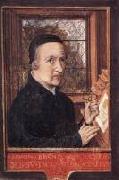 |
BENING, Simon
|
|
Flemish Northern Renaissance Manuscript Illuminator, ca.1483-1561
Simon Bening (1483?C1561) was a 16th century miniature painter of the Ghent-Bruges school, the last major artist of the Netherlandish tradition.
Bening was trained in his father Alexander Bening's miniature painting workshop in Ghent. He made his own name after moving to Bruges. His specialty was the book of hours, but by his time these were becoming relatively unfashionable, and only produced for royalty and the very rich. He also created genealogical tables and portable altarpieces on parchment. Many of his finest works are Labours of the Months for Books of Hours which are largely small scale landscapes, at that time a nascent genre of painting. In other respects his style is relatively little developed beyond that of the years before his birth, but his landscapes serve as a link between the 15th century illuminators and Peter Brueghel. His self-portrait and other portraits equally are early examples of the portrait miniature. He served as dean of the calligraphers, booksellers, illuminators, and bookbinders in the Guild of Saint John and Saint Luke.
He created books for German rulers, like Cardinal Albrecht of Brandenburg, and royalty like Emperor Charles V and Don Fernando, the Infante of Portugal.
The artistic tradition continued in his family. His eldest daughter, Levina Teerlinc, became a miniature painter, mostly of portrait miniatures and another daughter became a dealer in paintings, miniatures, parchment, and silk. |
|
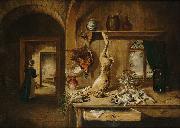 |
Benjamin Blake
|
|
United Kingdom (1757- 1830 ) - Painter
painted Still life of game in a larder in 1830 |
|
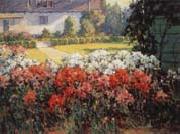 |
Benjamin C.Brown
|
|
American,is best remembered for his Impressionist renderings of the Sierra Mountains and poppy-filled spring meadows.1865-1942 |
|
|
|
 |
Benjamin Champney
|
|
(November 20, 1817 - December 11, 1907) was a painter whose name has become synonymous with White Mountain art of the 19th century. He began his training as a lithographer under celebrated marine artist Fitz Henry Lane at Pendleton's Lithography shop in Boston. Most art historians consider him the founder of the "North Conway Colony" of painters who came to North Conway, New Hampshire and the surrounding area during the second half of the 19th century. His paintings were often used to make chromolithographs that were subsequently sold to tourists who could not afford Champney's originals. He exhibited regularly at the Boston Athenæum and was a founder of the Boston Art Club
|
|
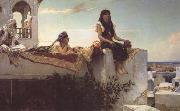 |
Benjamin Constant
|
|
1767-1830
French-Swiss novelist and political writer. He had a tumultuous 12-year relationship with Germaine de Staël, whose views influenced him to support the French Revolution and subsequently to oppose Napoleon, for which he was exiled (1803 C 14). He later served in the Chamber of Deputies (1819 C 30). Adolphe (1816) was a forerunner of the modern psychological novel. |
|
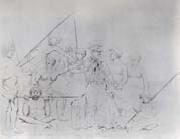 |
Benjamin Duterrau
|
|
1767 - 1851 , was an artist in England and in early colonial Australia. Duterrau was was born in London to parents of French descent. Duterrau was apprenticed to an engraver and in 1790 did two coloured stipple engravings after Morland, The Farmer's Door and The Squire's Door. Taking up painting, between 1817 and 1823 he exhibited six portraits at Royal Academy exhibitions, and he also exhibited three genre pieces at the British Institution about the same period. Duterrau emigrated to Van Diemen's Land (now Tasmania), arriving in August 1832 with his daughter. He lived at the corner of Campbell and Patrick Streets in Hobart, and practised as a portrait painter. In 1835 he did some etchings of Indigenous Australians, the first examples of that craft to be done in Australia. His most famous painting The Conciliation is in the Hobart gallery with a self-portrait and other works, including some modelling in relief. A large landscape is in the Beattie collection at Launceston, and he is also represented in the Dixson collection at Sydney. Duterrau died at Hobart in 1851. |
|
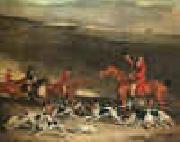 |
Benjamin Marshall
|
|
1767-1835
British
Benjamin Marshall Gallery
was an English sporting and animal painter. He was a follower of George Stubbs and studied under Lemuel Abbott for a short period of time. After 1792, he began painting animals, settling at Newmarket in 1812 near the racetrack. He returned to London in 1825 and died in 1835. |
|
|
|
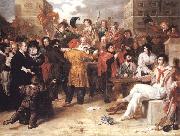 |
Benjamin Robert Haydon
|
|
English Romantic Painter, 1786-1846
1786-1846.was an English historical painter and writer. Haydon was born at Plymouth. His mother was the daughter of the Rev. Benjamin Cobley, rector of Dodbrooke, near Kingsbridge, Devon. Her brother, General Sir Thomas Cobley, was renowned for his part in the siege of Ismail. Benjamin's father, a prosperous printer, stationer and publisher, was well known in Plymouth. Haydon, an only son, at an early date showed an aptitude for study, which was carefully fostered by his mother. At the age of six he was placed in Plymouth grammar school, and at twelve in Plympton St Mary School, the same school where Sir Joshua Reynolds had received most of his education. On the ceiling of the school-room was a sketch by Reynolds in burnt cork, which Haydon loved to sit and look at. Whilst at school he had some thought of adopting the medical profession, but he was so shocked at the sight of an operation that he gave up the idea. Reading Albinus inspired him with a love for anatomy; but from childhood he had wanted to become a painter. Full of energy and hope, he left home, on 14 May 1804, for London, and entered the Royal Academy as a student. He was so enthusiastic that Henry Fuseli asked when he ever found time to eat. Aged twenty-one (1807) Haydon exhibited, for the first time, at the Royal Academy, The Repose in Egypt, which was bought by Thomas Hope the year after for the Egyptian Room at his townhouse in Duchess Street. This was a good start for the young artist, who shortly received a commission from Lord Mulgrave and an introduction to Sir George Beaumont. In 1809 he finished his well-known picture of Dentatus, which, though it increased his fame, resulted in a lifelong quarrel with the Royal Academy, whose committee had hung it in a small side-room instead of the great hall. That same year, he took on his first pupil, Charles Lock Eastlake, later destined to become one of the great figures of the British art establishment. In 1810 his financial difficulties began when the allowance of £200 a year from his father was stopped. His disappointment was embittered by the controversies in which he now became involved with Beaumont, for whom he had painted his picture of Macbeth, and Richard Payne Knight, who had denied the beauties as well as the money value of the Elgin Marbles. |
|
|
|
|
|
|
|
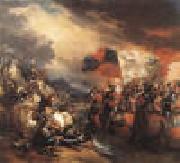 |
Benjamin West
|
|
1738-1820
Benjamin West Locations
Benjamin West RA (October 10, 1738 ?C March 11, 1820) was an Anglo-American painter of historical scenes around and after the time of the American War of Independence. He was the second president of the Royal Academy serving from 1792 to 1805 and 1806 to 1820.
In 1760, sponsored by Smith and William Allen, reputed to be the wealthiest man in Philadelphia, West traveled to Italy where he expanded his repertoire by copying the works of Italian painters such as Titian and Raphael.
As painted by Gilbert Stuart, 1783-84West was a close friend of Benjamin Franklin, whose portrait he painted. Franklin was also the godfather of West's second son, Benjamin.
In 1763, West moved to England, where he was commissioned by King George III to create portraits of members of the royal family. The king himself was twice painted by him. He painted his most famous, and possibly most influential painting, The Death of General Wolfe, in 1770, exhibited at the Royal Academy in 1771. Although originally snubbed by Sir Joshua Reynolds, the famous portrait painter and President of the Royal Academy, and others as over ambitious, the painting became one of the most frequently reproduced images of the period.
In 1772, King George appointed him historical painter to the court at an annual fee of £1,000. With Reynolds, West founded the Royal Academy of Arts in 1768. He was the second president of the Royal Academy from 1792 to 1805. He was re-elected in 1806 and was president until his death in 1820. He was Surveyor of the King's Pictures from 1791 until his death. Many American artists studied under him in London, including Charles Willson Peale, Rembrandt Peale, Gilbert Stuart, John Trumbull, and Thomas Sully. [3]
West is known for his large scale history paintings, which use expressive figures, colours and compositional schemes to help the spectator to identify with the scene represented. West called this "epic representation".
He died in London. |
|
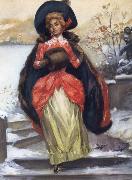 |
Benjamin West Clinedinst
|
|
Illustrator and Painter.
American , 1859-1931
was an American illustrator and painter, born at Woodstock, Va. He studied for a year in Baltimore and for five years in Paris under Cabanel and Bonnat and first attracted attention in New York with his illustrations for Leslie's Weekly. He was best known as the illustrator of Thomas Nelson Page's Unc' Edinburg, the works of Hawthorne, Stevenson, and Mark Twain, although he worked also in oils and water colors. His sympathetic collaboration with the author gave his work an especial charm. He was awarded the Evans prize of the American Water-Color Society in 1900. In 1947. |
|
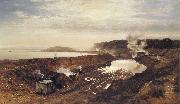 |
Benjamin Williams Leader
|
|
British Painter, 1831-1923
was an English artist. Born in Worcester as Benjamin Leader Williams, he was the son of civil engineer Edward Leader Williams (who was also a keen amateur artist and friend of John Constable) and Quaker Sarah Whiting. His brother, also called Edward Leader Williams, followed in his father's footsteps and became a notable civil engineer. The family lived in Worcester at Diglis House. Williams Leader was educated at the Royal Grammar School Worcester and then the Royal Academy Schools. He immediately became successful as an artist and first exhibited his work at the Royal Academy in 1854. Since that year until his death in 1923 his paintings were hung in every summer exhibition at the Royal Academy. He was knighted as Chevalier of the Legion of Honour by the French in 1889 and was created a full member of the Royal Academy in 1898 (RA - Royal Academician). In 1914 he was given the Freedom of the City of Worcester in recognition of his services (as a director of Royal Worcester Porcerlain and a native of the city). Famous paintings include February Fill Dyke and Autumn's Last Gleam. His paintings were bought by King George V and William Gladstone amongst others, and he became one of the most popular and expensive artists of his day. His works received popular approval for their verisimilitude, and the fame of February Fill Dyke, facilitated by an etching, spread to London, Paris, and the United States. |
|
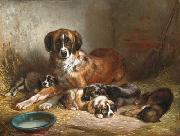 |
Benno Adam
|
|
(July 15, 1812, Munich - March 9, 1892, Kehlheim) was a German painter.
He specialised in animal portraits and market and hunting scenes.
He was the son of painter Albrecht Adam.
|
|
|
|
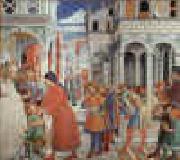 |
Benozzo Gozzoli
|
|
Italian Early Renaissance Painter, 1420-1497
Italian Renaissance painter. Early in his career he assisted Lorenzo Ghiberti on the east doors of the Baptistery in Florence and Fra Angelico on frescoes in Florence, Rome, and Orvieto. His reputation today rests on the breathtaking fresco cycle The Journey of the Magi (1459 ?C 61) in the chapel of Florence's Medici-Riccardi Palace. His work as a whole was undistinguished, however. He painted several altarpieces and a series of 25 frescoes of Old Testament scenes, now badly damaged, for the Camposanto in Pisa (1468 ?C 84).
|
|
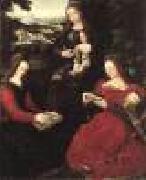 |
BENSON, Ambrosius
|
|
Flemish Northern Renaissance Painter, ca.1495-1550
South Netherlandish painter of Italian birth. In 1518 he acquired Bruges citizenship, and in 1519 he was admitted to the guild of painters and saddlemakers there as an independent master, with the comment that he was 'from Lombardy'. He may have been from Ferrara, although he was originally called Ambrogio Benzone, taking his first name from the patron saint of Milan, the capital of Lombardy. He was probably attracted to Bruges by its commercial and artistic reputation. Initially he worked in the studio of Gerard David, by whom he was profoundly influenced, but after a few months the relationship went wrong and the younger painter brought a case against David. Benson's first marriage was to Anna Ghyselin, who bore him two sons, Willem Benson (1521/2-1574) and Jan Benson (before 1530-before 1581), both of whom became artists. From his second marriage, to Josyne Michiels, a daughter Anna was born, and he had two other daughters from various extra-marital relationships. Benson was an affluent and successful man: he owned several houses, for one of which he gave eight paintings in half payment (which gives some idea of the value of his works at the time). Benson twice received commissions from city magistrates to decorate their new county hall and was a member of the city council on three occasions; he also held important offices within the painters' guild, including dean (1537-8 and 1543-4) and governor (1540-41). His pupils included his two sons, and Joachim Spaers (1541) and Jacob Vinson (Fynson; 1549). |
|
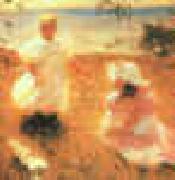 |
Benson, Frank
|
|
American, 1862-1951
American painter, etcher and teacher. He attended the School of the Museum of Fine Arts, Boston, from 1880 to 1883 as a student of Otto Grundmann (1844-90) and Frederick Crowninshield (1845-1918). In 1883 he travelled with his fellow student and lifelong friend Edmund C. Tarbell to Paris, where they both studied at the Acad?mie Julian for three years with Gustave Boulanger and Jules Lefebvre. Benson travelled with Tarbell to Italy in 1884 and to Italy, Belgium, Germany and Brittany the following year. When he returned home, Benson became an instructor at the Portland (ME) School of Art, and after his marriage to Ellen Perry Peirson in 1888 he settled in Salem, MA. Benson taught with Tarbell at the Museum School in Boston from 1889 until their resignation over policy differences in 1913. |
|
|
|
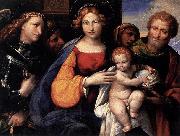 |
Benvenuto Tisi
|
|
(1481 - September 6, 1559) was a Late-Renaissance-Mannerist Italian painter of the School of Ferrara. Garofalo's career began attached to the court of the Duke d'Este. His early works have been described as "idyllic", but they often conform to the elaborate conceits favored by the artistically refined Ferrarese court.
Born in Ferrara, Tisi is claimed to have apprenticed under Panetti and perhaps Costa and was a contemporary, and sometimes collaborator with Dosso Dossi. In 1495 he worked at Cremona under Boccaccino, who initiated him into Venetian colouring. He may have spent three years (1509 - 1512), in Rome. This led to a stylized classical style, more influenced by Giulio Romano.
Invited by a Ferrarese gentleman, Geronimo Sagrato, to Rome, he worked briefly under Raphael in the decoration of the Stanza della Segnatura. From Rome family affairs recalled him to Ferrara; there Duke Alfonso I commissioned him to execute paintings, along with the Dossi, in the Delizia di Belriguardo and in other palaces. Thus the style of Tisi partakes of the Lombard, the Roman and the Venetian modes.
He painted extensively in Ferrara, both in oil and in fresco, two of his principal works being the "Massacre of the Innocents" (1519), in the church of S. Francesco, and his masterpiece "Betrayal of Christ" (1524). For the former he made clay models for study and a clay figure. He continued constantly at work until in 1550 blindness overtook him, painting on all feast-days in monasteries for the love of God. He had married at the age forty-eight, and died at Ferrara on the 6th (or 16th) of September 1559, leaving two children.
Garofalo combined sacred inventions with some very familiar details. A certain archaism of style, with a strong glow of colour, suffices to distinguish from the true method of Raphael even those pictures in which he most closely resembles the great masterthis sometimes very closely; but the work of Garofalo is seldom free from a certain trim pettiness of feeling and manner.
|
|
|
|
 |
BERCHEM, Nicolaes
|
|
Dutch Baroque Era Painter, 1620-1683
Nicolaes Pieterszoon Berchem (1 October 1620 - 18 February 1683) was a highly esteemed and prolific Dutch painter of pastoral landscapes, populated with mythological or biblical figures, but also of a number allegories and genre pieces.
Born in Haarlem, he received instruction from his father Pieter Claesz, and from the painters Jan van Goyen, Jan Wils and Claes Cornelisz. Moeyaert. (It is not known why he called himself Berchem or Berighem, and other variants). For some time it was supposed Berchem traveled to Italy with a fellow painter Jan Baptist Weenix, whom he called his cousin. In 1645 he became a member of the Dutch reformed church and married the year after. Being a widower he married the daughter of Jan Wils. Around 1650 he did travel to Westphalia with Jacob van Ruisdael. May be Berchem went to Italy after this trip and before he moved to Amsterdam. Around 1660 he worked for the engraver Jan de Visscher designing an atlas. In 1670 he moved back to Haarlem, but Berchem died in Amsterdam in 1683.
His paintings, of which he produced an immense number, (Hofstede de Groot claimed around 850, although many are misattributed), were in great demand, as were his 80 etchings and 500 drawings. His landscapes, painted in the Italian style of idealized rural scenes, with hills, mountains, cliffs and trees in a golden dawn are sought after. Berchem also painted inspired and attractive human and animal figures in works of other artists, like Allaert van Everdingen, Jan Hackaert, Gerrit Dou, Meindert Hobbema and Willem Schellinks. The French Rococo painter Jean-Baptiste Pillement was influenced by his works. |
|
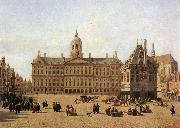 |
BERCKHEYDE, Gerrit Adriaensz.
|
|
Dutch Baroque Era Painter, 1638-1698
Brother of Job Berckheyde. Gerrit specialized in a particular type of architectural subject, the TOWNSCAPE. His painted work shows a debt not only to Pieter Saenredam's conception of the building portrait but also to Saenredam's refined draughtsmanship and dispassionate attitude; these qualities mark Berckheyde as a classicist and akin to Vermeer. Berckheyde favoured views of monuments on large open squares, a choice that distinguishes him from the other great Dutch townscape painter, Jan van der Heyden, who preferred views along canals in which clarity was sacrificed for pictorial effect. |
|
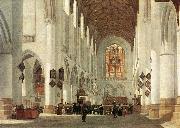 |
BERCKHEYDE, Job Adriaensz
|
|
Dutch painter (b. 1630, Haarlem, d. 1693, Haarlem).
He was apprenticed on 2 November 1644 to Jacob Willemsz. de Wet, whose influence is apparent in his first dated canvas, Christ Preaching to the Children (1661; Schwerin, Staatl. Mus.), one of the few biblical scenes in his oeuvre. On 10 June 1653 he repaid a loan from the Haarlem Guild of St Luke, which he subsequently joined on 10 March 1654. During his stay in Heidelberg, Job painted portraits and hunting scenes at the court of the Elector Palatine, who rewarded him with a gold chain, perhaps the one he wears in his early Self-portrait (c. 1655; Haarlem, Frans Halsmus.), his only documented work from the 1650s. Job is better known for his later work, which consists mainly of interior views of St Bavo's church in Haarlem and simple genre scenes recalling those of his Haarlem contemporaries Adriaen van Ostade and Jan Steen.
|
|
|
|
|
|
|
|
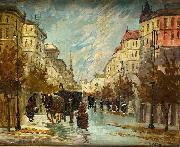 |
Berkes Antal
|
|
(1874-1938) was a Hungarian painter, born in Budapest, Hungary. Lived in Paris for some time and produced cityscapes there as well as similar street scenes of Budapest and Vienna.
He studied at The Academy of Fine Arts between 1889-1894 in Budapest, Hungary. He first started painting landscapes, and later changed to painting street scenes of Budapest. His popularity and sales increased so he started "mass producing" many of his works, meeting the requirements of the art dealers of his age. His work went through light and dark periods as he experimented with light.
|
|
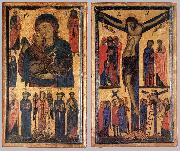 |
BERLINGHIERI, Bonaventura
|
|
Italian Gothic Era Painter, active 1215-1242
Italian painter. Originally from Lucca, he was the most gifted of a family of Lombardian painters. His Scenes from the Life of St. Francis on the predella of the altar of San Francesco (Pescia) is the earliest known visual representation of St. Francis' life. Also noted are Scenes from the Life of St. Francis (Santa Croce, Florence) and St. Francis Receiving the Stigmata (Accademia, Florence). |
|
|
|
|
|
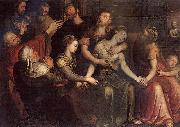 |
Bernaert de Ryckere
|
|
Bernaert de Rijckere (c1535, Kortrijk - 1590, Antwerp), was a Flemish Renaissance painter.
According to Karel van Mander he was born in Kortrijk and was admired there for an altarpiece depicting Christ bearing the cross, which he made for the St. Marten's church of the brothers of the Cross there. He later took on a different style that Karel van Mander had heard of but had not seen to be able to judge it for himself. He said he moved to Antwerp and joined the Guild of St. Luke there in 1561.
According to the Netherlands Institute for Art History he was the teacher of his son, the painter Abraham de Rijcke, and is known for landscapes and historical allegories. |
|
 |
Bernaert Van Orley
|
|
Flemish Northern Renaissance Painter, ca.1488-1541, Painter and tapestry designer, son of Valentin van Orley. He was one of the greatest proponents of ROMANISM, a northern style based on the ideals of the Italian Renaissance. It must have been in Brussels, however, that he saw the Italian works of art that influenced him so profoundly, for it seems unlikely that he ever travelled to Italy. Brussels was then world-renowned as the centre for tapestry manufacture but was suffering from the ecliptic rise of Antwerp as the pre-eminent painting centre. The artist made the best of both situations, establishing himself as a leading designer for the Brussels tapestry industry and as a master in the Antwerp Guild of St Luke by 1517. |
|
 |
Bernard Blommers
|
|
(30 January 1845 in The Hague - 12 December 1914 in The Hague) was a Dutch etcher and painter of the Hague School.
He learned lithography early in his career, and then studied at the Hague Akademie under Johan Philip Koelman until 1868.His early paintings were mostly genre works depicting fishermen and their wives, heavily influenced by Jozef Israëls.The later works (from about 1890) are more loosely painted, although maritime and genre scenes remained the primary subject matter. His work was critically successful during his lifetime, being sought after by English, Scottish and American collectors.
|
|
|
|
 |
Bernard Hall
|
|
Artist, teacher, Director of Melbourne??s National Gallery and Felton Bequest advisor
English-born Australian, 1859-1935
was an English-born Australian artist. Hall was born at Liverpool, England. The son of a Liverpool broker of the same family as Captain Basil Hall, writer of books of travel, he was well educated and grew up in an atmosphere of culture. He studied painting at South Kensington, Antwerp and Munich, and worked for some to years in London. He exhibited at the Royal Academy and was one of the original members of the New English Art Club. On the death of George Frederick Folingsby in 1891 he was appointed director of the National Gallery of Victoria at Melbourne, and began his duties in March 1892. He held the position for 43 years aria many of the well-known painters of Australia were trained by him in the gallery painting school. He also acted as adviser to the trustees for purchases for the gallery and art museum, and when the munificent bequest of Alfred Felton was received his responsibilities were much increased. In 1905 he went to England to make purchases under this bequest, and although the amount then placed in his hands was comparatively small, he made better use of what was available than any subsequent adviser of his time. After his return he was expected to advise on everything submitted that might find a place in an art museum and, although he never claimed to be an expert in all these things, he supplemented his knowledge with hard reading and made cornparatively few mistakes. Hall's own paintings were usually interiors, nudes, or paintings of still life. He was often represented at the Victorian Artists' and other societies' exhibitions and held several one-man shows, but he was kept so busily employed as director and adviser, that his paintings had to be done at week ends and during vacations. In February 1934 he again went to London as adviser to the Felton trustees and died there on 14 February 1935. He was married twice in 1894 to Miss E. M. Shuter and in 1912 to Miss G. H. Thomson, who with one son by the first marriage and two sons and a daughter by the second marriage, survived him. Hall was a tall man of distinguished appearance, courteous but slightly austere in manner, with strong convictions, and little sense of compromise. He was extremely conservative in almost everything from his art to his politics. |
|
|
|
|
|
Bernard, Emile
|
|
French, 1868-1941
French painter and writer. He was the son of a cloth merchant. Relations with his parents were never harmonious, and in 1884, against his father's wishes, he enrolled as a student at the Atelier Cormon in Paris. There he became a close friend of Louis Anquetin and Toulouse-Lautrec. In suburban views of Asni?res, where his parents lived, Bernard experimented with Impressionist and then Pointillist colour theory, in direct opposition to his master's academic teaching; an argument with Fernand Cormon led to his expulsion from the studio in 1886. He made a walking tour of Normandy and Brittany that year, drawn to Gothic architecture and the simplicity of the carved Breton calvaries. In Concarneau he struck up a friendship with Claude-Emile Schuffenecker and met Gauguin briefly in Pont-Aven. |
|
|
|
 |
Bernardino Fungai
|
|
Italian
1460-1516
Italian painter. He is recorded in 1482 as Benvenuto di Giovanni garzone at work on the monochrome frescoes decorating the drum of the cupola of Siena Cathedral. Most scholars have accepted Benvenuto as Fungai teacher but stress the greater influence of Matteo di Giovanni; other proposals have included Giovanni di Paolo and, following the reattribution of paintings traditionally ascribed to Giacomo Pacchiarotti, Pietro Orioli. Fungai depended heavily on the preceding generation of Sienese painters and was considerably influenced by the contemporary activity of Pietro Perugino, Luca Signorelli and Bernardino Pinturicchio in and around Siena. His works are characterized by the docility of the figures, a keen decorative sensibility in the use of colour and the treatment of drapery and landscape, and a pleasantly engaging narrative skill. Although identification of works from his early career is problematic, a sizeable oeuvre has been ascribed on the basis of a signed and dated altarpiece executed for S Niccole al Carmine depicting the Virgin and Child Enthroned with SS Sebastian, Jerome, Nicholas and Anthony of Padua (1512; Siena, Pin. N.).
|
|
|

